 top
top top
top| Resources |
|
| Jump to... Courses Scales Approximate reasoning Nice books Numeracy Lists of Magnitudes / Landmarks Other... |
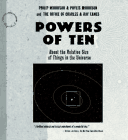 |
Powers of Ten
: About the Relative Size of Things in the Universe, and the Effect
of Adding Another Zero. Philip Morrison and Phylis Morrison, and The Office of Charles and Ray Eames. 1982, 1994. Scientific American Library. ~$20. [Amazon] [The classic.] [** I should add descriptions of films, CD, etc. I though there was a web version, but I can't find it now. **] Powers Of Ten (the movie) and an early draft. Powers of Ten Interactive CD-ROM. A poster and flipbook also exist. There are lots of links on the `Powers of Ten' scales page. "Powers Of Ten" was inspired by the 1957 Cosmic View: The Universe in 40 Jumps. Related films include the NASM IMAX Cosmic Voyage, the National Film Board of Canada's Cosmic Zoom and Planetary Vision's Cosmic Zoom. The Eames Office has a www.powersof10.com. PoT is a theme of the Hayden Planetarium Rose Center. A reader says the Film Board's animation is "beautifully hand drawn". |
Timescale : an atlas of the fourth dimension
Comparisons of distance, size, area, volume, mass,
weight, density, energy, temperature, time, speed
Powers Of Time
Seeing Time
From Quark to Quasar : Notes on the Scale of the Universe
Imagining the Universe : A Visual Journey
Consider a Spherical Cow
: A Course in Environmental Problem Solving.
Search for Simplicity
The Back of the Envelope
On the Back of an Envelope: A column devoted to encouraging
calculation in geology
The Cosmological Milkshake
Educated guesses
On Size and Life
On Number Numbness
A Mathematician Reads the Newspaper
Niel Brandt's Timelines and Scales of Measurement Page
The Magnitudes of Physics
Quest / Science by the Numbers
Physiology by Numbers: An Encouragement to Quantitative Thinking
The Dynamic Environment - Computer Models to Accompany Consider a Spherical Cow
Used Math (2nd ed)
Ad Astra's "Back of the Envelope" column does
not have anything to do with BotE calculation.
From the Exploratorium's
Structure and Shape Learning Resources
About the Size of It: Film Series Leaps of Scale: The Dimensions of
Time
Nigel Calder
1983. Viking Press.
Diagram Group.
1980. St. Martin's Press.
Demetrios, Eames
[I have not seen this.]
A reader reports it's also on the Powers of 10 Interactive CD-Rom.
Powers of Time compliments
the classic short film, Powers
of Ten. Just as Powers of Ten
is about spatial scale, Powers
of Time is a journey in time.
The journey slices time finer
and finer, down to the tiniest sliver of time for which
we have a name, the attosecond (10-18). Then we
see a representation of ever-longer stretches of
time, from a single second to
over 31 billion years (or 10+18). A brilliant approach
to a complex subject.
Grades: 9-12, C, A; 9 mins
Hone, Robert(Bob) and Red Hill Studios
(Stuff here.)
[I have not seen this.]
This exhibit exposes museum visitors to the many
different natural changes that take place over various
time scales - from geologic processes that transend
millions of years, to the changes in a forest over forty
year, down to microscopic events that are measured in
fractions of a second.
Supported by a $500,000 grant from the
National Science Foundation (Installed at
Exploratorium in San Francisco, June '95
and The Science Museum of Minnesota,
Summer '95)
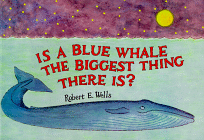
Is a Blue Whale the Biggest Thing There Is?
Robert E. Wells
1993. Albert Whitman & Co.
[Amazon]
Ages 4-8.
Peter H. Cadogan,
1985. Cambridge University Press.
[Basically a remake of Powers of Ten, perhaps targeted at a slightly
more general audience. Some nice nuances of difference.]
Edward Packard.
1994. Perigee Books. 154 pages.
[Amazon]
[Some pictorial scale comparisons, centered in a San Francisco
ball park. Mainly length (> 1 meter). Some time. First read
Powers of Ten and Timescale.]
Approximate reasoning
John Harte (UCBerkeley).
1988. University Science Books. $25.
[Amazon]
The idea for this text evolved from courses in environmental science
I have taught at Yale University and the University of California at
Berkeley over the past 15 years. These courses have ranged from the
introductory undergraduate to the advanced graduate level. Regardless
of the level, I have stressed quantitative problem solving in all my
courses, and over the past 15 years I have invented a sizeable
repertoire of homework problems. These, along with a few delightful
ones contributed by my colleagues, form the basis for this
book."[xi]
Note also `The Dynamic Environment
- Computer Models to Accompany Consider a Spherical Cow'.
Weisskopf, Victor F.
Column in the American Journal of Physics.
Dec 1984 - Feb 1986 (atleast).
[Some notes.]
Purcell, Edward M.
A column in the American Journal of Physics.
Jan 1993 - July 1984. (atleast)
[Some notes.]
Triplehorn, Don
A column in the Journal of Geological Education.
1994 v. 42 p. 46, 164, 272, 402, 524; 1995 v. 43 p. 58, 289. (atleast)
[Some notes.]
Robert Ehrlich,
1995. Rutgers University Press.
John A. Adam
In "Quantum: The Magazine of Math and Science", Sept/Oct 1995 (v6n1)(pgs 20-24).
Nice books
Thomas A. McMahon and John Tyler Bonner.
1983. Scientific American Library. [Out of print?]

The Science of Measurement
Herbert Arthur Klein
1974. Dover reprint (1988). ~736 pgs. [Amazon]
Numeracy
Hofstadter, Douglas R.
Scientific American, May 1982, "Metamagical Themas" column.
reprinted with added "Post Scriptum" (pp 131-135) in book
Metamagical themas : questing for the essence of mind and pattern
New York : Basic Books, c1985.
pp 115-135

Innumeracy: Mathematical Illiteracy and Its Concequences
Paulos, John Allen
1988. Amazon
Paulos, John Allen
1995.
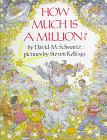 How Much is a Million?
How Much is a Million?
by Schwartz, David M., pictures by Kellog, Steven
1985, (multiple editions/publishers, including Mulberry Books and Scholastic).
36 p. [Amazon]
"If one million kids climbed onto one another's shoulders,
they would be...
taller than the tallest buildings,
higher than the highest mountains,
and further up than airplanes can fly.
If you wanted to count from one to one million...
it would take you about 23 days.
If a goldfish bowl were big enough for a million goldfish...
it would be large enough to hold a whale.
Presto! One hundred stars. If this book had a million stars,
they would fill seventy pages."
These elements are then repeated for a billion, and a trillion.]
Lists of Magnitudes / Landmarks
Including
Evolutionary / Geological Timeline,
Cosmological Timeline,
Scales of Measurement.
George Goth
An insert in The Physics Teacher vol34, Dec 1996.
[A list of some 500 values.]
Here is a copy.
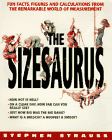
The Sizesaurus : from hectares to decibels to
calories : a witty compendium of measurements
Stephen Strauss
1997, Avon. 1995, Kodansha International.
[I've yet to look at this closely. It seems a science
journalist's combination of magnitude lists with discussions of
individual units (something like those in Klein's The Science of
Measurement).
Some additional info can be found on
Amazon.com's pages for the 1995 (hardcover) and 1997 ("somewhat revised" paperback) editions.
]
Scott LaFee
A newspaper column of the
Union-Tribune's Quest [links broken].
[Eh.]
Other...
Things I plan to look at...
Richard Burton
Other books
Leonard J. Soltzberg
1995. University Science Books.
-Two Books and Software for the Macintosh 0-935702-38-5 $58
-Two Books and Software for Windows 0-935702-37-7 $58
"
Clifford Swartz,
1993. American Association of Physics Teachers.
From the net: "This is great for the student who needs a quick
explanation of the mathematics you need in introductory physics. It
is also great for the instructor."
Some Misc
Amazon.com's Size perception topical page.
"general goals regarding feed consumption, feed conversion and egg production or
body weight gain for small flocks."
Astronomy stuff
McBean Theater, 2pm In this program, the earth is formed, babies
are born, and we travel to the edges of the universe, all in a matter
of minutes! The first part of this program explores how film condenses
time, helping us to experience great shifts in scale. Films include
Baby Booming (1989, 2 min.) by Mary Cybulski and John Tintori;
Pasadena Freeway Stills (1974, 5 min.) by Gary Beydler; Delugion (3
min.) by Michael Rudnick and Rock Ross; An American Time Capsule
(1969, 3 min.) by Charles Braverman; Going Up (1989, 30 min.) by Gary
Pollard; Geologic Time (1989, 7 min.), which tells the entire history
of the world in a mere six minutes; Eyes to Earth (1986, 10 min.) by
Tom Van Sant; Charles and Ray Eames' classic Powers of Ten (1968, 9
min.), an adventure in magnitudes; and Lew Alquist's Frame (3 min.).
About the Size of It: Film Series Leaps of Scale: Part Two
McBean Theater, 2pm Messing around with scale is part of the classical
training of an animation artist. Thanks to the animator's charged
imagination, peas transform into planets, and we see the world from a
fly's perspective. Films include Please Don't Feed the Animals (1988,
4 min.) by J. Stephan Leeper; The Fly (1982, 3 min.) by Ferenc Rofusz;
Nose Hair (1994, 5 min.); Academy Award winner Mona Lisa Descending a
Staircase (1992, 9 min.) by Joan Gratz; Marv Newland's Black Hoola
(1994, 5 min.) and Bambi Meets Godzilla (1962, 2 min.); Max
Fleischer's Felix Trifles with Time (1925, 6 min.); the classic Tex
Avery short King Size Canary (1947, 7 min.); and Through the Mirror,
in which Mickey Mouse experiences his own adventure in Wonderland.
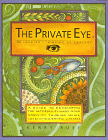 Ruef, K. 1992 The Private Eye. 224 pp., paperback, 8.5x11". ISBN
0-9605434-1-4
The Private Eye Project,
Ruef, K. 1992 The Private Eye. 224 pp., paperback, 8.5x11". ISBN
0-9605434-1-4
The Private Eye Project,
"7710 31st Ave. NW, Seattle, WA 98117; 206-784-8813, FAX 206-781-2172.
Teacher's guide (add $3.50 shipping) $18.95
5x loupe 3.95. 10 or more loupes, each 2.30.
Kit for class of 36 (with 50x microscope) 570.00
[Amazon]
This is listed as a "curriculum guide" for want of a better place to
put it; it's unique. An educator would say that it's a manual that
shows how to use a 5x jeweler's loupe to incorporate constructivist
science into an integrated curriculum, over the full K-12 grade
range. It actually does that, without the use of either scientific or
educational jargon (like that in the previous sentence). The central
role of imagery in science is used to link science to visual and
verbal arts, and magnification is used as the key to
observation. Study of simple "found" objects is followed by
descriptive analogy and the development of theory. It lacks specific
lesson plans with detailed materials lists, but it's a wonderful
introduction to the creative use of inquiry science in almost any
classroom, by any teacher. Science professionals also can learn from
it how to present their specialty in a classroom in a way that will
communicate excitement and encourage further inquiry. Grades K-12 and
adult."
[Quote from
MICROSCOPY FOR CHILDREN: A BIBLIOGRAPHY ]
`Order of Magnitude' Notation From
Statistical Thermodynamics. [links broken]
Comments encouraged. - Mitchell N Charity
<mcharity@lcs.mit.edu>
Doables:
This page is in serious need of an overhaul.
(less so now, but still)
History:
2003-Feb-03 Repaired links - 5 fixed, 3 removed, 5 flagged.
2002-Jul-17 Fixed "Powers of Time" link. Mentioned it's on CD. - Thanks to a reader.
2001-Jul-28 Added `Cosmic Zoom' links - Thanks to a reader. Fixed a few others.
This page has drawn little comment over the years, and thus little work.
2001-Mar-13 Fixed a link.
2000-Mar-14 Added `Order-of-Magnitude Astrophysics'.
1999.Nov.25 Added a link.
1998.Nov.19 Some cleanup.
1997.Sep.30 Corrected Sizesaurus citation - Thanks to author.
Put `Size perception' in `recent changes' and `history'.
1997.Sep.19 Added "Lists of Magnitudes / Landmarks" section,
and Amazon.com's `Size perception'
1997.Aug.12 Added "Physiology by Numbers" to the `I plan to look at' section.
1997.Jul.30 Added "Scientific Companion" note.
Prior changes were in June 1997.